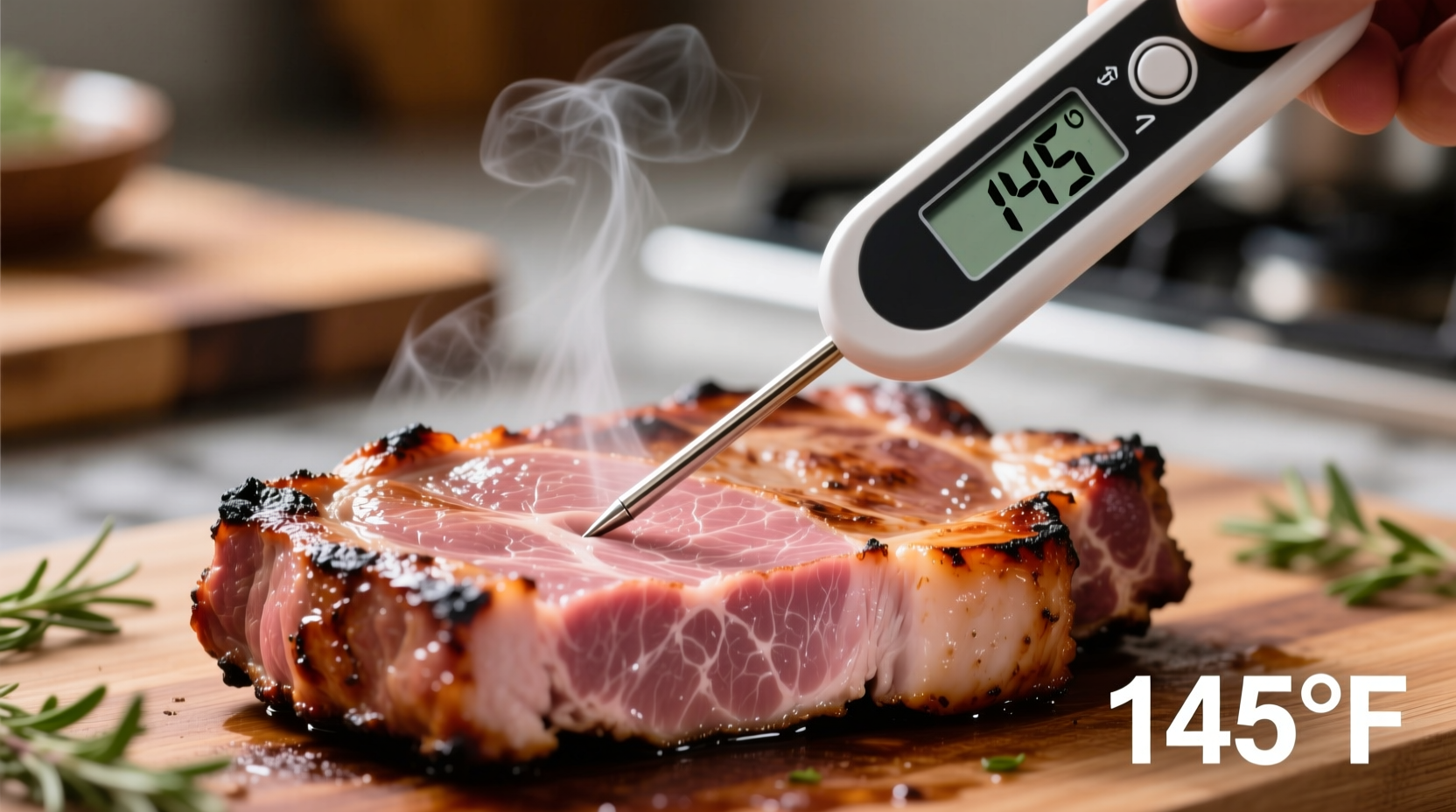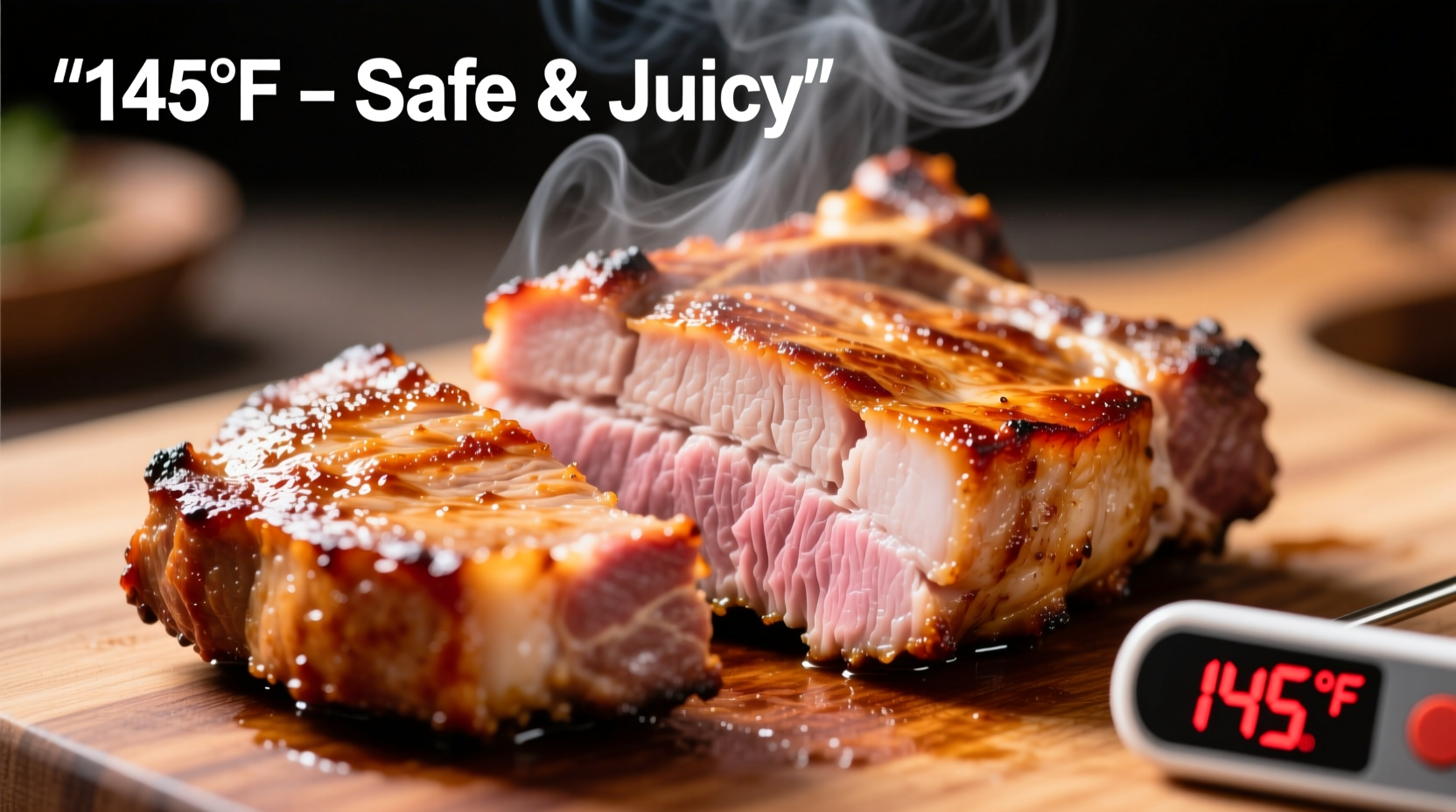For decades, home cooks were told to cook pork until it was well-done and completely white. But thanks to modern farming practices and food safety research, we now know that properly cooked pork can be slightly pink while still being perfectly safe to eat. Understanding the exact temperature requirements not only ensures food safety but also delivers juicier, more flavorful results every time you cook pork.
Why 145°F Is the Magic Number for Pork
The United States Department of Agriculture (USDA) updated its pork cooking guidelines in 2011 based on extensive research into food safety. This change reflected significant improvements in pork production that virtually eliminated trichinosis concerns in commercially raised pork. The previous recommendation of 160°F was overly conservative for modern pork.
| Time Period | Recommended Temperature | Scientific Basis |
|---|---|---|
| Pre-2011 | 160°F (71°C) | Trichinella parasite concerns |
| 2011-Present | 145°F (63°C) + 3-minute rest | Modern pork is virtually free of trichinella; pathogens are eliminated at lower temperatures with rest time |
This temperature timeline reflects how food safety science has evolved. The USDA's Food Safety and Inspection Service (FSIS) determined that at 145°F, harmful bacteria like Salmonella and E. coli are effectively destroyed, especially when combined with the critical 3-minute rest period that allows carryover cooking to complete the process.
Temperature Guidelines for Different Pork Cuts
While 145°F applies to whole muscle cuts, ground pork requires a higher temperature due to increased surface area where bacteria can reside:
- Whole cuts (chops, tenderloin, roasts): 145°F + 3-minute rest
- Ground pork and pork sausage: 160°F (no rest time needed)
- Pork shoulder (for pulled pork): 195-205°F for optimal shredding
- Pork ribs: 190-203°F for tender meat that pulls cleanly from the bone
These specific temperature ranges address the context boundaries of different cooking methods and cuts. For example, when smoking pork shoulder for pulled pork, you're not just concerned with safety but also with breaking down connective tissue for proper texture.
How to Measure Pork Temperature Accurately
Proper thermometer use is essential for accurate temperature readings:
- Use an instant-read digital thermometer for best results
- Insert the probe into the thickest part of the meat, avoiding bone or fat
- Take multiple readings in different spots for larger cuts
- Check temperature toward the end of cooking time
- Allow the 3-minute rest period before serving
Many home cooks make the mistake of relying on color alone to determine doneness. While properly cooked pork may have a slight pink hue, this isn't a reliable indicator of safety. The USDA confirms that color varies based on pork's pH, cooking method, and even the breed of pig.

Common Misconceptions About Pork Cooking Temperatures
Despite the updated guidelines, many people still overcook pork due to lingering concerns about trichinosis. According to the Centers for Disease Control and Prevention (CDC), cases of trichinellosis in the United States have dropped dramatically, with an average of just 16 cases reported annually between 2011-2015, primarily from wild game rather than commercial pork.
The National Pork Board states: “Modern pork is 31% leaner than it was 30 years ago, which means it can dry out more quickly if overcooked. Cooking to 145°F preserves moisture while ensuring safety.” You can verify this information directly through the USDA's Food Safety Education resources at https://www.fsis.usda.gov/food-safety/safe-food-handling-and-preparation/meat/cooking-meat-done.
Practical Tips for Perfectly Cooked Pork
Follow these professional techniques to achieve restaurant-quality results at home:
- Thermometer calibration: Test your thermometer in ice water (should read 32°F) or boiling water (212°F at sea level)
- Carryover cooking: Remove pork from heat when it reaches 140°F to account for temperature rise during resting
- Resting technique: Tent loosely with foil to retain heat without steaming the surface
- Cross-contamination prevention: Use separate cutting boards and wash hands thoroughly after handling raw pork
Remember that oven temperatures, grill heat distribution, and even the starting temperature of your meat affect cooking time. A reliable thermometer remains your most important tool for consistent results.
Food Safety Considerations Beyond Temperature
While temperature is crucial, proper food handling practices complete the safety picture:
- Refrigerate raw pork at 40°F or below
- Cook within 3-5 days of purchase or freeze for longer storage
- Never thaw pork at room temperature
- Clean all surfaces that contact raw pork with hot, soapy water
- Store leftovers within 2 hours of cooking
Following these guidelines alongside proper temperature control creates a comprehensive food safety approach that protects you and your family.
Conclusion: Cooking Pork Perfectly Every Time
Modern food safety science has given us precise temperature guidelines that balance safety with quality. By cooking pork to 145°F with a 3-minute rest, you'll enjoy tender, juicy results while eliminating food safety concerns. Invest in a quality thermometer, understand the specific requirements for different cuts, and practice proper food handling for consistently excellent results.











 浙公网安备
33010002000092号
浙公网安备
33010002000092号 浙B2-20120091-4
浙B2-20120091-4